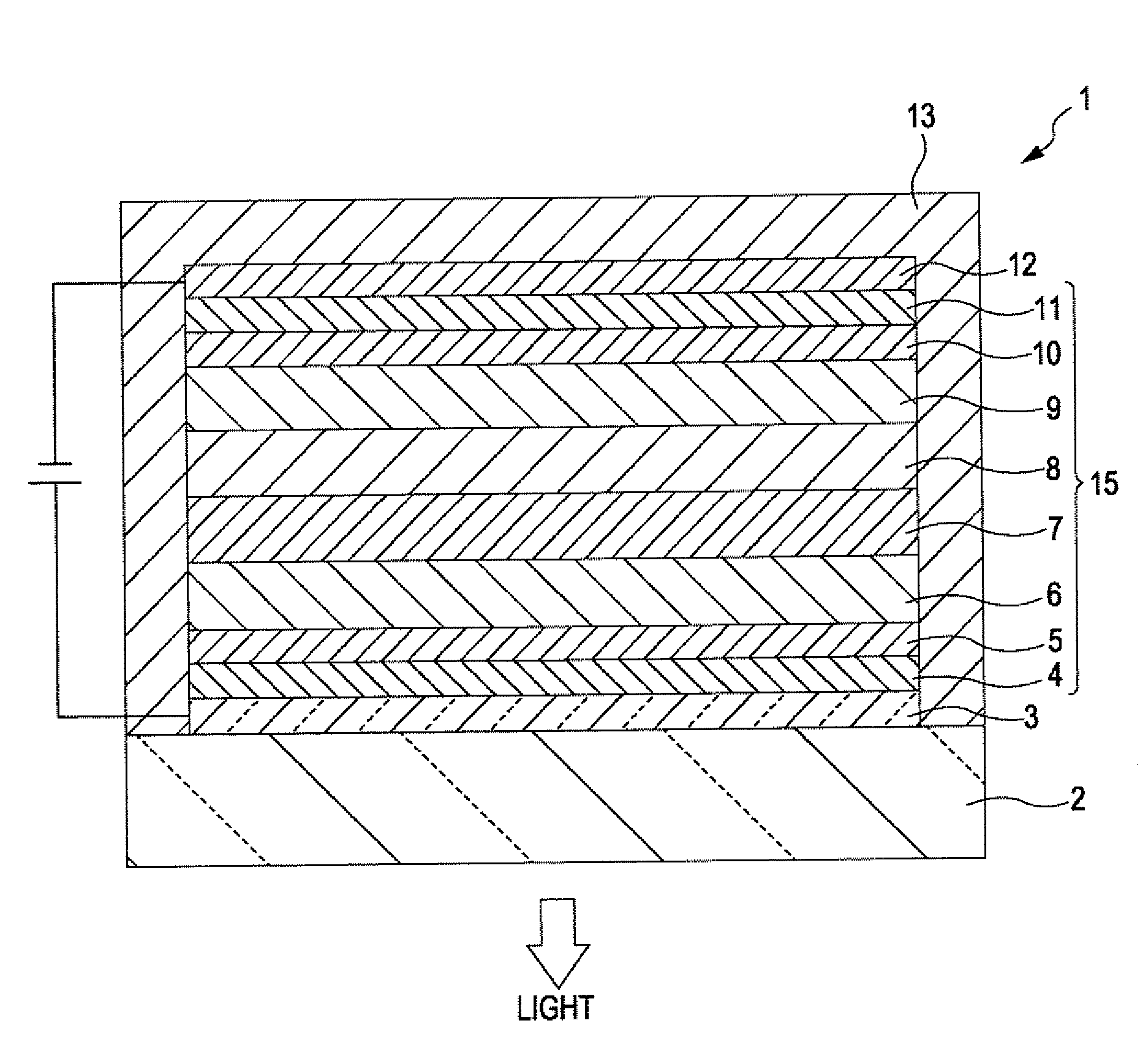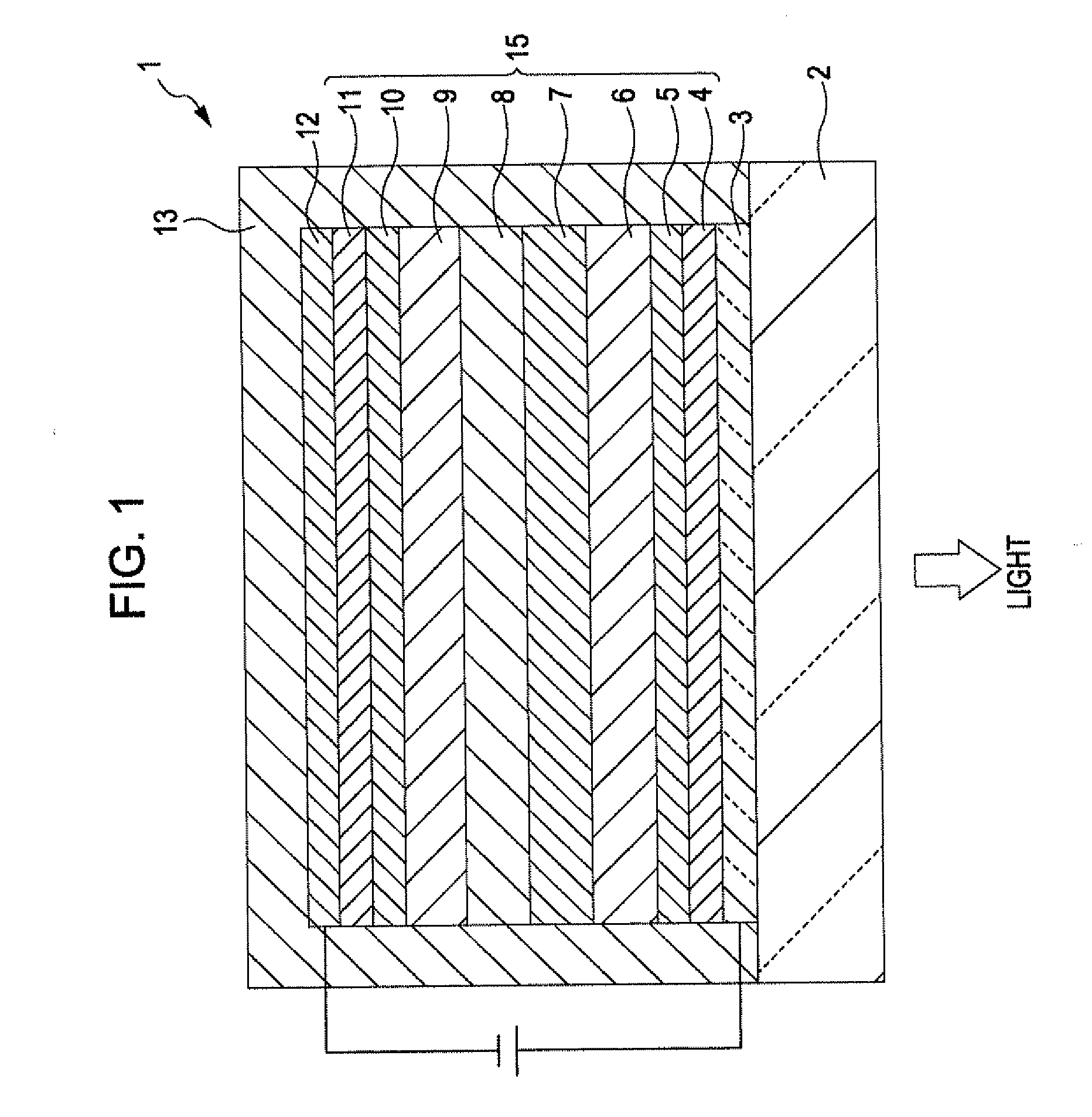Light-emitting device, display, and electronic apparatus
a technology of light-emitting devices and electronic devices, applied in the direction of discharge tubes/lamp details, organic semiconductor devices, discharge tubes luminescnet screens, etc., can solve the problems of low durability of light-emitting devices according to patent document 1, and achieve the effect of reliable electronic devices
- Summary
- Abstract
- Description
- Claims
- Application Information
AI Technical Summary
Benefits of technology
Problems solved by technology
Method used
Image
Examples
first embodiment
[0044]FIG. 1 is a longitudinal sectional view schematically showing a light-emitting device according to a first embodiment of the invention. For convenience of illustration, the top of FIG. 1 is referred to as the “top” of the device, whereas the bottom of FIG. 1 is referred to as the “bottom” of the device.
[0045]Referring to FIG. 1, a light-emitting device (EL device) 1 emits white light by combining red (R) light, green (G) light, and blue (B) light.
[0046]The light-emitting device 1 includes an anode 3, a hole-injecting layer 4, a hole-transporting layer 5, a red light-emitting layer (first light-emitting layer) 6, an intermediate layer 7, a blue light-emitting layer (second light-emitting layer) 8, a green light-emitting layer (third light-emitting layer) 9, an electron-transporting layer 10, an electron-injecting layer 11, and a cathode 12 that are stacked in the above order.
[0047]In other words, the light-emitting device 1 includes a laminate 15 formed between the two electrod...
second embodiment
[0167]FIG. 2 is a longitudinal sectional view schematically showing a light-emitting device according to a second embodiment of the invention. For convenience of illustration, the top of FIG. 2 is referred to as the “top” of the device, whereas the bottom of FIG. 2 is referred to as the “bottom” of the device.
[0168]A light-emitting device 1A according to this embodiment is the same as the light-emitting device 1 according to the first embodiment except that the light-emitting layers 6, 8, and 9 and the intermediate layer 7 are stacked in a different order.
[0169]Referring to FIG. 2, the anode 3, the hole-injecting layer 4, the hole-transporting layer 5, the blue light-emitting layer (third light-emitting layer) 8, the red light-emitting layer (first light-emitting layer) 6, the intermediate layer 7, the green light-emitting layer (second light-emitting layer) 9, the electron-transporting layer 10, the electron-injecting layer 11, and the cathode 12 are stacked on the substrate 2 in t...
example 1
[0210](1) First, a transparent glass substrate with an average thickness of 0.5 mm was prepared. An ITO electrode (anode) with an average thickness of 100 nm was formed on the substrate by sputtering.
[0211]The substrate was dipped in acetone and then in 2-propanol and was subjected to ultrasonic cleaning before the substrate was subjected to oxygen plasma treatment.
[0212](2) Next, a hole-injecting layer with an average thickness of 40 nm was formed on the ITO electrode by vacuum deposition using HI406 (manufactured by Idemitsu Kosan Co., Ltd.).
[0213](3) Next, a hole-transporting layer with an average thickness of 20 nm was formed on the hole-injecting layer by vacuum deposition using HT320 (manufactured by Idemitsu Kosan Co., Ltd.).
[0214](4) Next, a red light-emitting layer (first light-emitting layer) with an average thickness of 10 nm was formed on the hole-transporting layer by vacuum deposition using the material of the red light-emitting layer. The material of the red light-emi...
PUM
 Login to View More
Login to View More Abstract
Description
Claims
Application Information
 Login to View More
Login to View More - R&D
- Intellectual Property
- Life Sciences
- Materials
- Tech Scout
- Unparalleled Data Quality
- Higher Quality Content
- 60% Fewer Hallucinations
Browse by: Latest US Patents, China's latest patents, Technical Efficacy Thesaurus, Application Domain, Technology Topic, Popular Technical Reports.
© 2025 PatSnap. All rights reserved.Legal|Privacy policy|Modern Slavery Act Transparency Statement|Sitemap|About US| Contact US: help@patsnap.com



